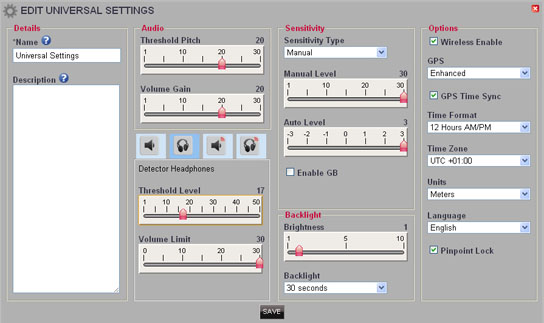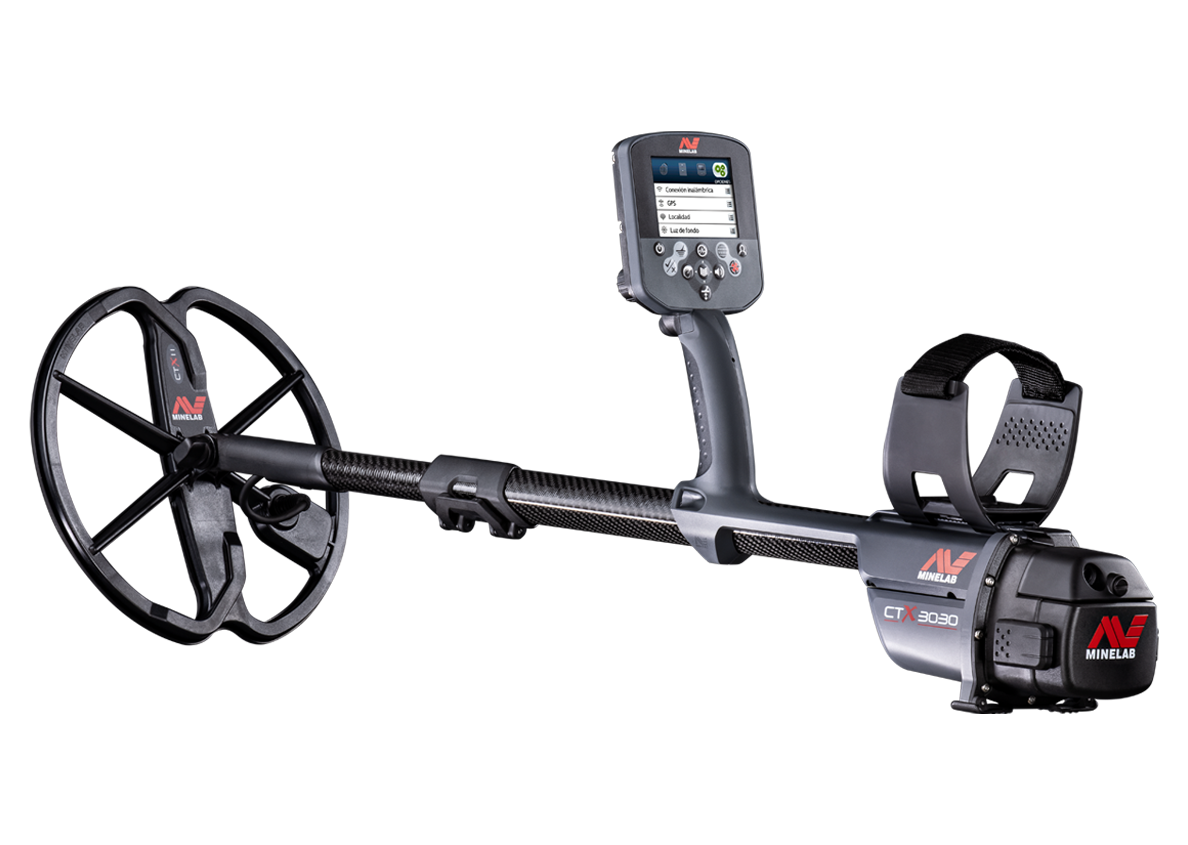In part one we built the mode (program) and now I would like to take a closer look at the settings and the thought behind them.
The first mode with the tadpole patterns is the main program, and the clear screen mode is the mode I switch to if I need to analyse iffy targets.
It doesn't matter how you mix and match these patterns between the two modes, and previously I mixed a tadpole and clear screen pattern on each mode. The problem with that is I couldn’t see which mode I was in as they looked very similar. So now I keep the most recognisable elements together, which are the tadpole patterns.
Important non-mode settings
Sensitivity is used in manual, and set as high as possible. Auto-sensitivity is very good on the CTX 3030, and if searching iron nail infested soils can bring good results.... However, I would always recommend finding the correct manual setting in this situation.
Volume Gain is set to 20 (max 30). This setting will give you an audio indication to deep high conductive targets. The CTX 3030 is a lot better at discriminating iron than the earlier FBS detectors. If you get a repeatable two way signal using my modes, chances are they won't be deep iron. If you run the gain at 20, you will find surface plough shears will give sharp high pitch responses, whereas deep high-conductive non-ferrous targets will sound soft, almost distant in their responses. So if its high pitched, soft and distant, it will almost always be a deep non-ferrous target.
Ground Balance is left in auto.
Manual Ground Balance is great for neutral ground and beach work, but on sites with high mineralisation and hot rocks, I wouldn't take the chance. If you get the manual setting wrong the detector will false badly. So use the CTX 3030 in Auto Ground Balance.
Threshold Pitch 20…. Threshold Level 17.
On the E-TRAC I would've set the pitch to "1". This is because the Threshold pitch effects all the sounds emitted from E-TRAC, and I wanted the lowest possible tones on low conductive targets. This is NOT the case with the CTX 3030, the Threshold Pitch adjusts just that, nothing else.
Although I'm specifying settings for Threshold Pitch and Threshold Level, please adjust them to your personal preference. The only thing I would suggest; is make sure the Threshold Level is audible, don't be tempted to turn it down too low.
And finally make sure you have Target Trace switched on. This is your eyes on what’s happening underground. It will help ID surface iron… or spot the keepers that lie amongst multiple trash targets.

In field advise
Select the first program and push the detect button. Then select the second program and start detecting. To switch between these modes press the user button.
To speed this procedure up at the beginning of the next session, switch off the CTX 3030 after selecting the lesser used program. Then the next time you go metal detecting; start up the detector, load the main program and start detecting.
Digging targets
Low and medium targets that give responses in both directions (as you sweep back and forth across the target) are easy to identify…. Dig them all!
High pitch targets take a little bit longer to learn, and generally I would suggest you dig all repeatable high tones. The deep ones that "sound distant" and the whispers will be the deep non-ferrous goodies missed by other detectors.
With experience you will suss the surface iron by the sharpness and the target trace.
I know a lot of you will be tempted to crank up the Gain, but remember, this doesn't increase the depth on the CTX 3030 like it did on the E-TRAC.
Now get out there and find something!
Gordon Heritage
MLOTV.com





















Comments
To make comments you must be logged in, please note comments will not display immediately due to moderation
Many thanks for help with the UK coin hunting its much appreciated as I am really struggling with understanding the CTX 3030 having previously had tone machines (Sovereign). A couple of possibly silly questions if you can assist. Why is the pattern called tadpole? I get a lot of blue coloured signals in the bottom right hand corner of the screen. The instructions tell you signals are colour coded but not what the colours mean.
Best regards,
Dave
Blue for ferrous (iron) and Red for non-ferrous.
If you switch on "Target trace" you will see twin traces (blue/red) for iffy signals... and with experience you'll be able to differentiate between good targets laying with iron, from the false signals given by large or circular Iron targets.
Thank you very much for your previously posted modes for CTX 3030, I found them very helpful. I use with success slightly modified your Muppet mode. And I like your UK program as well. But I have two questions about UK program:
1. Why do not use smooth response rather than normal? It could be benefit to hear small deep targets, I guess.
2. Ferrous-Coin separation seems to be rather confusing to me, as always showing good and bad target even if there is only iron. Even when there is only low conduct target I see at the right bottom corner iron sign and above at the right site of the screen(!) good target. Where is the benefit of Ferr-Coin separation? Sound is the same for all target separation, I hope.
Thank you for your answer
and have a lot of great finds
Truly yours
Pavel
1. Smooth sounds were my favourite sound process on the E-TRAC.... it helped me ID ferrous targets correctly, separating out the thin section non-ferrous targets like small hammered coin. This was mainly because the E-TRAC was a noisier detector, and smooth sounds (and high gain settings) altered metal targets leaving ground noise and falsing unprocessed.
The first programs I constructed for the CTX 3030 followed this line of thinking, all having smooth sounds.... but I soon discovered the improved audio quality of the new detector meant I could switch back to normal, and for me (my hearing), this improved the CTX 3030 detecting experience. The CTX 3030 is a very quiet machine compared to the E-TRAC and Explorers it follows. Deep targets using 'normal' and 25 gain sound faint and deep, there's no audio process masking the info i'm getting.
2. Target separation has little to do with the target sounds, and everything to do with target ID's. If you use the target ID's to identify the target before digging, you will probably prefer one of my other programs eg Muppet, which uses "Low trash" for stable target id's.
I prefer Ferrous coin separation because of the way it effects the target trace feature. Target trace is the only target ID tool I use other than sound. This is because I have a wide variation of targets here in the UK, I dig everything non-ferrous. TID numbers aren't something I look at.... if it sounds good I dig it.... if it sounds iffy I glance at the screen, at the target trace to work out if I should dig it or not.... and my decision is based on the sound I hear and the resulting target trace.
There are many ways of using the CTX 3030... this is how I use mine. I hope it helps others finding the best way of using theirs.
Gordon Heritage
I use your taddy pattern on the Etrac without the top Fe bits missing..I`ve found one large copper penny,1846,that was a very high pitched tone with id. numbers of 01:44,the numbers didn`t seem right but the tone did (I see what you mean about listening to the tones!).What else is likely to fall in the open areas of the fe01 line?
thanks
Clint